THE SECOND GLOBAL INTERACTIVE
FORUM ON TRAFFIC & SAFETYEvent
Thank you so much for your participation in the Symposium on 19th November, 2016.
Outline
| Title: | THE SECOND GLOBAL INTERACTIVE FORUM ON TRAFFIC & SAFETY |
| Venue: | U Thant International Conference Hall , United Nations University, 5-53-70 Jingumae Shibuya-ku, Tokyo 150-8925, Japan |
| Date: | Saturday, November 19, 2016 |
| Host: | International Association of Traffic and Safety Sciences (IATSS) |
Opening Address
Kazuhiko Takeuchi
IATSS President / Director and Professor, Integrated Research System for Sustainability Science (IR3S), The University of Tokyo. Institutes for Advanced Study (UTIAS)
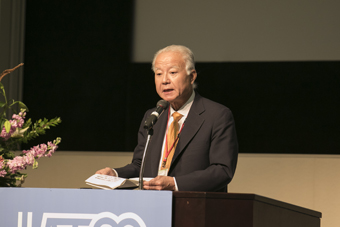
Prof. Kazuhiko Takeuchi, IATSS President, opened the symposium by thanking the audience and the participants for their attendance. The goal of this symposium is to improve traffic safety in the context of a changing world and society, and this improvement must come from a multi-disciplinary approach. The first GIFTS was held last year with the goal of reducing traffic fatalities and the point was made that data must be shared between countries in order to address traffic safety issues from a broader and more effective perspective.
Objective Description
Akinori Morimoto
IATSS Member and Chairperson, International Forum Committee Professor, Faculty of Science and Engineering, Waseda University
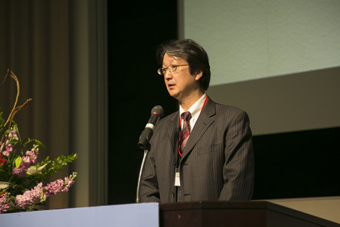
Prof. Akinori Morimoto welcomed the participants and the audience and noted that the alliance and partnerships between academia, government, and the private sector are of the utmost important in solving traffic-related issues. The various traffic safety challenges will be highlighted in this symposium. He then expressed his hope for an active and fruitful discussion.
Keynote Address
"Vision Zero - A Scientific Based Traffic Injury Reducing Strategy in Sweden"
Ulf Björnstig
IATSS Overseas Fellow Senior Professor of Surgery, Department of Surgery/KBC, Umeå University
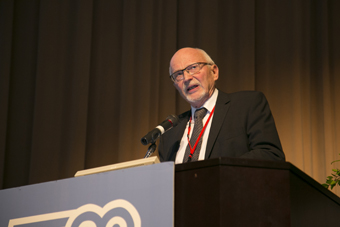 |
 |
Vision Zero presents an image of desirable future society and does not accept traffic fatalities or serious injuries in the road traffic system. Vision Zero shifts the paradigm from avoiding accidents to reducing serious and fatal injuries and also acknowledges that both the designers of the transport system and the road users are responsible for traffic safety.
Vision Zero also examines the role of trauma energy, which had benefited from the findings of Dr. Hugh De Haven and Col. John Stapp, who found that the human body can withstand severe trauma given both a deceleration distance and a certain safety package and harness. Dr. Haddon later noted that traffic-related injuries are preventable, non-random events.
Looking at this risk of impact speeds, humans can survive severe impacts given the above mentioned factors. Therefore examining safe speeds and stopping distance can make the difference between life and death in traffic incidents. Responsibility for safe driving speeds falls on the shoulders of national and local traffic authorities. Effective measures such as speed bumps, speed cameras, etc. can play a role in mitigating risk. Eliminating roadside hazards, such as un-deformable light poles and damaging guard rails is another factor. EuroRAP plays a role in finding such roadside hazards in Sweden and Europe.
The prevention of frontal collisions is the responsibility of the system owners. Heavy vehicle to passenger car collisions are an increasing problem and 1/3 to 1/2 of all collision deaths are caused by such crashes. Trucks and buses kill five times as many people per kilometer driven as passenger cars do. Theoretically deformable fronts on trucks could reduce fatal injuries by 1/3, or 900 lives in Europe. Mid-barriers also play a role in reducing fatal frontal crashes as well. Today one fourth of all kilometers driven are on mid-separated roads. Raising awareness of seat belt use is also essential, as seat belt use reduces fatal injuries by 2/3. Drunk driving is a growing problem in Sweden. Alcohol and dangerous drugs was found in half of all fatally injured motor vehicle drivers in Sweden, a 24 percent increase from about 10 years ago.
Vision Zero faces various success and difficulty factors. A success factor is that Sweden’s former Transport Minister, Ines Uusmann, recognized these problems put forward by Claes Tingvall, a traffic safety director. In addition, Vision Zero was processed to a quick parliament decision in 1997. A difficulty in Vision Zero’s implementation was that road administration and other traffic authorities have felt left behind in the decision process – causing resistance at many levels.
In terms of traffic safety data, the number of traffic fatalities in Sweden has fallen from 440 in 2005 to 259 in 2015. Most non-fatal injuries treated at hospitals involve cyclists according to data from Umeå, a mid-sized city in Sweden. Although passenger car injuries have decreased, injured cyclists and pedestrians have not decreased.
The Swedish government has released Vision Zero 2.0 in September 2016, which focuses on vulnerable road users, preventing suicides in traffic, and crash avoidance systems. Multi-disciplinary cooperation at all levels engaging medicine, engineering, human factors etc. will make road traffic safe.
Short Presentations
At first, Prof. Katsutoshi Ohta (IATSS Director / Professor Emeritus, the University of Tokyo) briefly introduced the presenters and laid out the schedule for the symposium.
"Creating a Road Safety Culture in GB: The Role of Political Leadership"
Nicola Christie
Director of Transport Institute, University College London
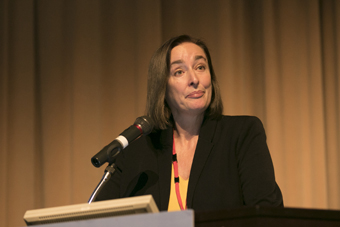 |
 |
In 1987, the government of the UK set ambitious national casualty reduction targets, which were derived from national datasets from the police and hospitals. The target set out to reduce road casualties by one-third by the year 2000 in comparison to the average numbers for the years 1981 to 1985. These targets exceeded – fatalities were reduced by 39 percent and serious injuries were reduced by 45 percent. New targets were set in 1999, but they were removed in favor of the Strategic Framework for Road Safety 2011, which adopts a safe systems approach.
Fatalities have been greatly decreasing since 2005 in the UK. However, it is increasingly evident that certain vulnerable groups exist that are disproportionately affected by traffic accidents. Almost half of traffic deaths in the UK - a greater proportion than in Sweden, Denmark, and the Netherlands – are from vulnerable groups such as pedestrians, bicycles, and motorbikes. No single factor is driving road causalities. The distance people travel, the mix of transportation modes, the behaviors of drivers, riders, and pedestrians, and the mix of groups of people using the roads are several influences.
"Road Safety in India - Current Status"
Geetam Tiwari
Ministry of Urban Development (MoUD) Chair Professor for Transport Planning, Department of Civil Engineering, Indian Institute of Technology (IIT) Delhi
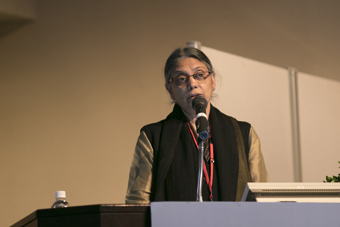 |
 |
Unfortunately, road traffic deaths in India have been on the rise since the 1970s. One of the challenges in figuring out the reasons for these number is that the data can often differ widely and contradict each other.
In terms of RTI fatality & population distribution by age in India and the US, it was found that those ages 15-29 were the most vulnerable. It was also found that annual RTI deaths per 100,000 population in million plus cities 1991-2011 saw a 2-4 times increase. In addition, most RTI fatalities are pedestrians and MTWs in many of India’s cities.
India's national policy target for road safety is to reduce road fatalities by 50 percent in 2020. National workshops, state road safety councils, safety road funds, increases in driving schools and increased road safety educations are some of the measures being taken to achieve this goal. Despite these efforts, however, the number of fatalities in India has continued to increase since 2012 and national continues to underreport vulnerable road users.
"Implementation of Vision Zero in the South African Context"
Marianne Vanderschuren
Associate Professor, Centre for Transport Studies, Department of Civil Engineering, University of Cape Town
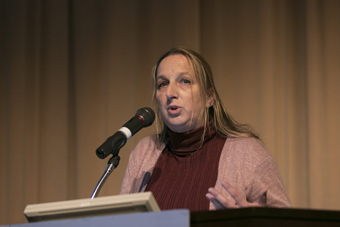 |
 |
Overall, South Africa can be viewed as a combination of first and third world societies. Congestion is severe in the country and some 65 percent of households do not have access to a car. These households are reliant on NMT and public transport. However, there is a lack of proper infrastructure in these areas and crime makes the NMT and PT users vulnerable.
In terms of the statistics, South Africa's road safety rate is between 23.5 and 32.5 per 100,000 persons, depending on the source and the economic impact of traffic accidents is estimated to be between 334 billion to 487 billion rands. In many cases, accidents leave households without income earners, increasing poverty.
Vision Zero's target of reducing fatal crashes by 50 percent will most likely not be achievable in South Africa until 2050. The methodology to attain this target in South Africa rests on five pillars: RS management, RS and mobility, safer vehicles, safer roads, and post-crash responses.
"Regional Decisions and Vision Zero"
Hirokazu Akahane
IATSS Member
Professor, Department of Civil and Environmental Engineering, Chiba Institute of Technology
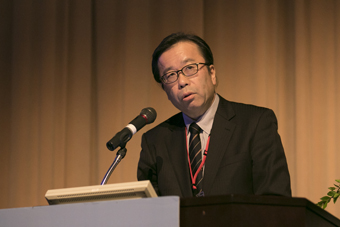 |
 |
Japan's Tenth Five-Year Fundamental Plan for Traffic Safety aims toward a society without traffic accidents. To achieve this goal, the plan aims to reduce the number of deaths occurring within 24 hours to 2,500 or fewer people by 2020 and reduce the number of causalities to 500,000 or fewer by 2020. The priority targets of the plan are senior citizens and children.
One region has recently been ranked the worst for the number of fatalities per 100,000 population in Japan.A reason for this is that the distances between the two stop lines at some intersections are longer than in other regions and the increase in the number of accidents due to the distances between the stop lines is statistically significant. It is presumed that the geometric structure of intersections is affected by the values of the local community. One recommendation for this region to improve traffic safety is to promote citizen participation based on local people's understanding of the causal relationship with traffic accidents.
A strategic research project is underway for the 50th anniversary of IATSS to objectively and systematically understand the background behind regional differences in traffic safety target settings. The project will comparatively examine statistics and conduct interviews in countries, summarize the issues regarding the current road safety measures, and provide suggestions.
Discussion
| Moderator: | Katsutoshi Ohta |
| Panelists: | Hirokazu Akahane, Geetam Tiwari, Marianne Vanderschuren, Nicola Christie, Ulf Björnstig |
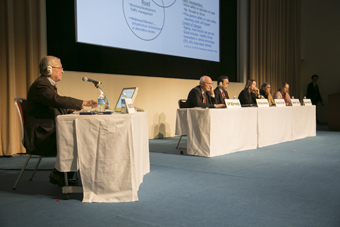 |
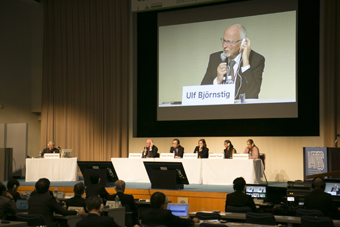 |
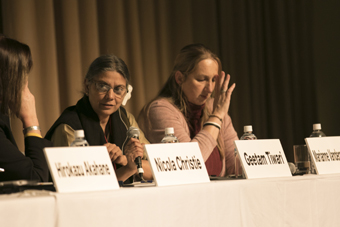 |
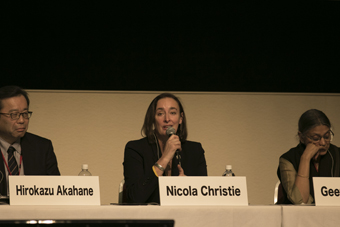 |
Katsutoshi Ohta
IATSS Director
Professor Emeritus, The University of Tokyo
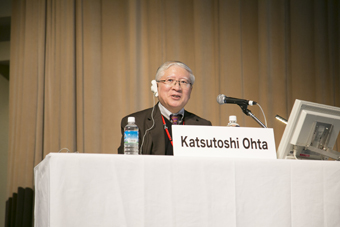 |
 |
After explaining the structure of the discussion, Prof. Ohta called for an open and fruitful discussion from the panel and attendees. In particular, he mentioned that the three Es, “engineering, enforcement, and education,” in relationship to Vision Zero was making a paradigm shift to safe system approaches that would reduce fatal and injury accidents even if a crash occurred. He also pointed out the need for organizing ways of thinking about new systematic and comprehensive approaches to concrete measures, and suggested a "strategic 4R (reduce car use, reduce crash risk, reduce crash damage, and rehabilitation) approach." He emphasized the importance of having the chronological perspectives of normal road use, crashes, post-crashes, and feedback for overall traffic as well as traditional perspective of road traffic systems involving people, vehicles, and roads.
Dr. Christie noted that the first stage in this process is getting political support at the local level in order to secure resources.
Prof. Tiwari addressed the new approach. The reduction of vehicle use has to be examined in the context of developing countries. The immediate step is to prioritize a strategy for vulnerable road users when cities are developed in poorer countries.
Prof. Björnstig stated that social contexts must be taken into account with this new approach, taking a local perspective. The transport culture can vary from one country to another.
Prof. Akahane responded that political support is important not only at the central level but the local level as well. He then explained how Kamagaya City has dealt with these issues on a local level. Decisions made by the heads of local governments are crucial in this regard.
Prof. Tiwari also expressed the opinion that political support is necessary. However, often political support is easily available for awareness campaigns and difficult to get for concrete scientific methods and establishing systems for long term evidence based strategies.
Dr. Vanderschuren replied that looking at the culture of different communities and looking at ways to change non-conformative behavior is how to respond to this problem effectively.
★About potential strategies to realize a new approach
Prof. Akahane replied that from the Japanese perspective, the important thing for local people is their own and their family's safety. Each individual person in the public has to be motivated to protect their and others' safety. People need to recognize that they are statistically likely to be involved in accidents and that this issue involves everyone. Further information and education must therefore be disseminated to the general public.
Prof. Tiwari stated that it is difficult for the general public to alter behavior based on low probability events. Safety campaigns can play a stronger role, but they must be augmented with enforcement efforts.
Prof. Björnstig stated that medical doctors are the end station for traffic safety. Data from medical centers must be more actively used as the data will be useful and accurate. It will also provide a better picture of traffic conditions from the local perspective. Sweden has actively used medical data and has seen some good results.
Dr. Vanderschuren replied that objective-based education would be necessary. Also, it must be recognized that the effects will be different by age and gender. Speed ramps could be utilized to make drivers think twice about drinking and driving.
★About new technology and the future of traffic safety
Dr. Vanderschuren stated that Uber is starting to make a huge difference in South Africa. It is providing people with new transportation options after consuming alcohol. These innovative initiatives have great potential to play important roles.
Prof. Tiwari stated that Uber can be problematic since it is listed as an aggregator and not as an employer, it can get around labor laws. There is no way of ensuring that the driver has not been driving for a long time.
Dr. Vanderschuren stated that each country has different rules in regulations for Uber. South Africa has been able to implement various checks and balances on Uber.
Prof. Akahane noted that there are other alternatives to Uber going forward. Systems that use new and old technologies can be better utilized. For example, services where people drive your car for you after alcohol consumption, can provide solutions.
Prof. Björnstig stated the main problems in Sweden are drunk driving, heavy vehicle collisions, and roadside hazards. In addition, speed cameras have come into more acceptance in Sweden and will be more actively used.
Prof. Akahane mentioned the project that IATSS was conducting in Kamagaya City. Chiba Prefecture. These results were transferred to Malaysia and information about near-misses is being disseminated. In Malaysia, smartphones are used to locate road hazards on internet-based maps. Best practices should be shared with the world to learn from each other and to increase efficiency.
Dr. Christie stated that new speed management technologies will come into play. Vehicle activated signs are effective, as are mobile and static cameras. A managed system for main roads is important. Further restrictions on young drivers may be implemented, but it provides limits on mobility so it must be debated. An academic capacity has to be maintained for road safety.
Prof. Tiwari noted that pedestrians must remain a high priority as it affects low income countries and high income countries alike. Making cities safer for pedestrians is an area that has to be further looked at. New technology has to be used to collect more data. A standardized license plate can be easily captured by cameras, which will provide better data and encourage drivers to drive at safer speeds. The Sustainable Development Goals mention safety directly in seven goals and indirectly in 5 goals. To meet these goals, safe infrastructure for walking, non motorized transport and public transport has to be created.
Dr. Vanderschuren reflected back on the suggestions for technology changes. The car breathalyzer is useful but has flaws as another person can breathe into it for the driver. Countries that are the safest in road accidents have good infrastructure, which is needed for education and enforcement to be effective.
★Questions & comments from the audience
•The first discussant asked about Vision Zero. He asked how Vision Zero was spread and confidence built in the program. He also asked about the overall framework for drivers in Vision Zero 2.0.
•The second discussant pointed out the importance of decreasing speed and asked about the international standard of proper speed in relation to obstacles.
•The next discussant asked about bicycles and motorcycles and how they are positioned within the overall traffic safety framework.
Prof. Björnstig responded that Vision Zero was taken in quickly by the authorities, which helped. The politicians acted quickly and provided a lot of support, also economically, which accounts for its success.
Prof. Akahane raised the point that motorcycles account for 70 percent of accidents in Malaysia. However, motorcycles are one of the most convenient forms of transportation in Malaysia; therefore, proactive countermeasures based on independent ideas are necessary, if it is assumed that this percentage will remain high.
Dr. Christie emphasized that understanding the social context is important to traffic safety.
Prof. Tiwari stated that in most Asian countries, especially in rural areas, motorcycles are the most convenient form of transportation. Safety, therefore, remains a large question to address.
Dr. Vanderschuren stated that in the Netherlands bicycles are highly used for transportation. In South Africa, the environment is different and are used less. However, the fatality rate is higher in South Africa due to poor infrastructure.
★Closing remark
Prof. Ohta noted that with the rapid progress in driver assistance systems associated with automatic driving, people have to be fully aware of the characteristics and potentials of the innovative technologies and devise creative ways to use them. By further using IoT, we can gather accurate and useful data on traffic safety. We need to consider the trend of technological innovation systematically and implement a traffic safety policy considering a variety of backgrounds. He said he would like to suggest this as the theme of the symposium next year. With that, the symposium was brought to a close.
Closing Address
Satoshi Kamada
Executive Director, IATSS
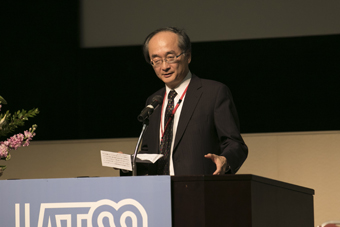
Mr. Satoshi Kamada closed the symposium by expressing his great pleasure with the results of this year’s workshops and symposium. A more multidisciplinary approach to traffic safety is being taken than ever before. In the 42 years since the establishment of IATSS, the organization has always pursued such multidisciplinary approaches. Many aspects of technology and traffic safety are increasingly interconnected on a global scale. This means that there must be better collaboration internationally – especially between developed and developing countries. Vision Zero presents a great opportunity to undergo a paradigm shift in the field of traffic safety in presenting new ideas on an international scale. With these final remarks, Mr. Kamada brought the symposium to a conclusion.

